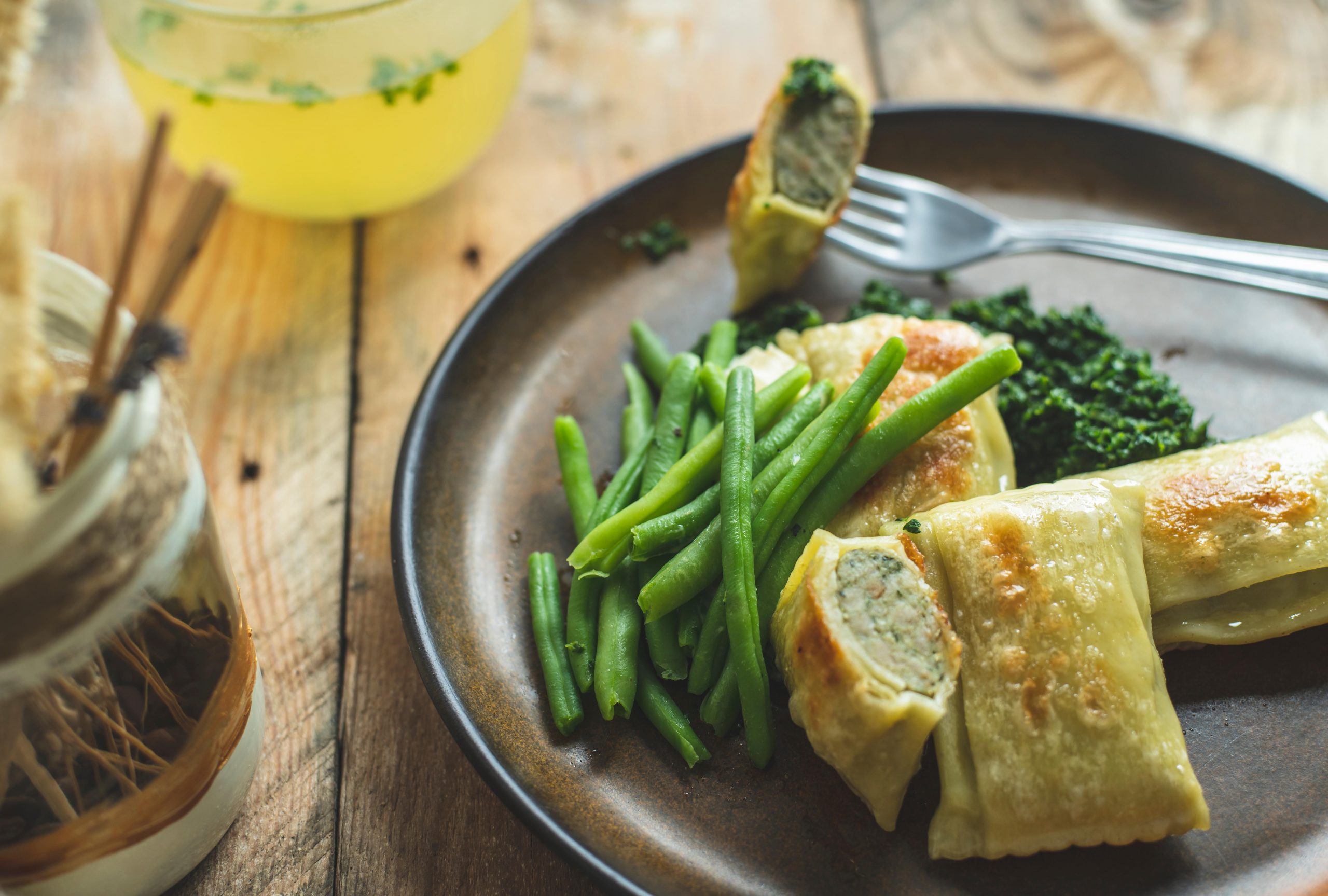China has dumplings, Italians love Raviolis, Russians eat Pelmeni, and Germany is proud of their Maultaschen. Maultaschen are a specialty of the Swabian cuisine (Swabian is a region in Germany in the state Baden-Wuertenmberg). The popular dish consists out of small bags made of pasta dough with a basic filling of sausage meat, onions, and soaked bread rolls or a purely vegetarian filling with cheese and spinach. In many family traditions, other fillings became very popular as well, for instance, cooked ham, spinach, smoked ham sausage, minced meat, or other leftovers that are found in the fridge. The Swabian Maultaschen have been protected by the EU in their designation of origin since 2009 and are part of the “Protected Geographical Indication” class. This means that at least one of the production stages – production, processing, or manufacturing – is passed through in the region of origin.
The Origin of Maultaschen
There are various legends about the origin of this dish. One says that in this way, the Cistercian monks of the Maulbronn monastery (hence the name Maultasche) wanted to hide the meat from the dear Lord during Lent, which popularly led to the nickname “Herrgottsbscheißerle” which means as much as “Lordscheat.” Slightly modified, it is said that it was Protestants who secretly added meat to the Maultasche, which was initially only filled with herbs and spinach. The tradition in Swabian families fits in with the fact that “Maultaschen served in broth is the typical dish on Maundy Thursday.
Other stories tell that the Maultaschen are just a Swabian copy of well-known Italian pasta such as ravioli and tortellini. Waldensians were Protestant religious refugees from northern Italy, who also introduced the mulberry tree, alfalfa, tobacco cultivation, and the potato in 1710 in southern Germany. This could make Maultaschen of Italian origin. The spinach filling also points to the Italian origin.
Regardless of the origin and the legends behind the Maultaschen, it is a dish everyone should give a try. While it can be found in every Swabian restaurant, it is nearly impossible to find a Restaurant in Barcelona, that serves this dish. However, this leaves you with a great opportunity to improve your cooking skills and learn something new.
How to prepare Maultaschen
You need the following ingredients.
For the dough:
- 300 g Flour
- 2 Eggs
- Salt
- Muskat
- 59 ml Water
- 1 teaspoon Oil
For a meat filling:
- 1 Onion
- A bunch of parsley
- A bunch of chives
- 1 bun (preferably from the day before)
- 1 spoon Oil
- 250 g Spinach
- 20 g grounded Beef & Pork
- Muskat
- 1 Egg
- Salt and Pepper
For a vegetarian filling:
- 2 buns (preferably from the day before)
- A bunch of parsley
- A bunch of chives
- 400 g Spinach
- 250 goat cream cheese
- A bunch of spring onions
- A bunch
- 2 eggs
- 1 Spoon Oil
Instructions for preparation
Knead the dough ingredients into a smooth pasta dough.
For the filling, peel the onion and finely chop parsley or wild garlic. Sauté until hot in hot oil. Put the spinach leaves briefly in hot water, quench cold and let them dry thoroughly – if necessary, squeeze them out. Then chop finely as well. Soak the bun in cold water, then squeeze it out (preferably in a larger sieve) and pluck. Mix the meat or minced meat with the egg and the spices. Then add the other ingredients and mix everything well.
Curl the pasta dough into a rectangle on the floured surface and cut into smaller rectangles. Spread a little of each of the filling into one half of the rectangles, then fold the other half of the dough over it and first press down gently to let the air escape, then press down firmly. Bring to the boil in plenty of boiling salted water, then let it steep for about 20 minutes over low heat. Take out with a slotted spoon and drain.
You can serve the Maultaschen in a hot broth or roasted in butter and onions with a potato salad on the side.
